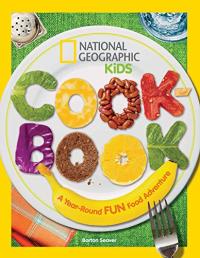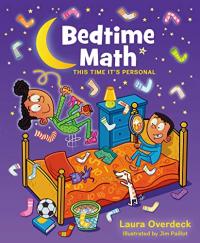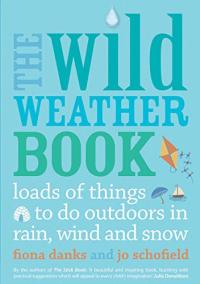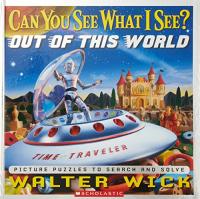
Meet animals like the cow in informative rhymes and cartoon illustrations. Turn half the page and make a “pow” — half pig, half cow. Funny critters emerge with each half page turn. See and read the poem about another farm animal when pages match.
Flip Flap Farm

The children first introduced in Journey (opens in a new window) begin another imaginative adventure armed with magic markers that add color to an otherwise monotone world. No words are needed as this visual voyage stands on its own and is sure to encourage multiple examinations.
Quest

In an attractive, sturdy package, readers are invited to learn about the history of sculpture and several prominent sculptors (such as Rodin and Duchamp). Then readers are invited to create their own cardboard structures, called “a maquette — a French word for a small study of the sculpture…” Ready-to-punch-out pieces and instructions are included.
You Call That Art?!

Foodies and cooking aficionados as well as those only marginally interested in food are sure to find something to enjoy in this handsomely formatted and enriching look at food. Recipes range from easy to more complex and are placed amid information and activities for the entire year.
National Geographic Cookbook: A Year-Round Fun Food Adventure

An unnamed narrator dreams he has visited the studio of artist Henri Matisse where he meets the artist himself. Matisse’s words and mixed media illustration are used to explore Matisse’s paper cutouts briefly but effectively. Color, line and language introduce not only an artist but are sure to inspire further exploration.
Meet Matisse

Playful situations from familiar situations and activities make math come alive. Questions for “wee ones”, “little” and “big kids” as well as bonuses make this humorously illustrated bedtime book fun at any time of the day. It’s a follow-up to Bedtime Math: A Fun Excuse to Stay Up Late (opens in a new window).
Bedtime Math 2: This Time It’s Personal

Fog is the only type of cloud that is close enough to feel; all other clouds can only be seen. Folk art and crisp text brings different types of clouds into focus for budding scientists. Cloud facts and directions for making a cloud in a jar conclude this informative and engaging introduction to clouds, weather, and observation.
Clouds

A small ladybug loves to hide — and she does it well in each familiar scene. “Yoo-hoo, Ladybug? Where are you?” She’s hiding behind the teddy bear, tucked in a box, and other places in this brightly illustrated, rhyming hide-and-seek book for younger children.
Yoo-Hoo, Lady Bug!

Discover why boats — even filled with people — can float, but a small pebble sinks in water. Easy experiments and lucid explanations are presented with cartoon-like illustrations to bring concepts like density and displacement into focus for readers of all ages.
Things That Float and Things That Don’t

Is the magic in the book or with the reader as they are asked to tap the brown tree? A green leaf appears and then when rubbed, pink blossoms emerge. A rhythmic text encourages participation to see seasonal changes in the sturdy tree from winter’s end to spring birds nesting.
Tap the Magic Tree

There are faces all around. They can be seen in everyday things, like a chair. And they can be made from fruits and vegetables, tools and what is found in the garden. When imaginations are let loose, there are all kinds of faces to see and to make! Cheerful collages made from different materials are sure to inspire creativity and making faces.
Let’s Make Faces

What happens if you push the red button? The monster changes color! Curious young readers will enjoy the results of pushing the forbidden buttons of the benign looking purple monster. Even a two-dimensional button will generate silly play in this simple tale.
Don’t Push the Button

A partial image of an animal is accompanied by the question, “What am I?” With a turn of the page, a larger look at the animal is shown, accompanied by “Where am I?” Another turn reveals the habitat. Handsome, highly realistic watercolors in a predictable format introduce animals, ending with a portrait of a boy “on the beautiful Earth.”
What Am I? Where Am I?

Intriguing questions introduce the notion of possibility and its opposite which leads to the introduction of mathematical probability. Activities and games to test the chances of something happening involve coins, cards and more to bring the concepts into clear, recognizable and highly appealing focus.
That’s a Possibility: A Book About What Might Happen

There’s always something to do outside regardless of the weather. A range of activities are presented through short descriptions and photographs with notation to indicate if the activity can be done independently or if adult help is needed. Some are messy, all are doable.
The Wild Weather Book

Search and find each intricate photograph to identify toys and other familiar play objects. Ultimately, a space traveler and a princess come together in a toy room in this latest installment by Wick.
Can You See What I See? Out of this World

Carefully placed holes create eyes for different creatures, real and imaginary, in a series of questions and answers. Young readers are sure to respond aloud as they finger the die-cuts.
Peekaboo!

Two boys meet and develop a friendship. Readers will gain meaning and be able to read expressively from the animated presentation (in typeface and color as well as placement) of simple words which are ideal to read aloud in tandem. (Children can describe not only plot but attributes - characteristics and characterization - of the 2 boys. A discussion of language and how we greet our friends as well could take this into a social skills direction.)
Grapes of Math

Join three children who find a magical piece of chalk that begins an exciting series of events to figure out “what next.” This might be fun to use together with Crockett Johnson’s Harold and the Purple Crayon.
Chalk

Science is all around and whether planning a science fair project or just exploring the world something is sure to intrigue. Information and activities are presented in a large, heavily illustrated format organized by “inspirations” such as toys and “yourself & other humans”.
See for Yourself: More than 100 Experiments for Science Fairs and Projects

Everyone eats so naturally, the kitchen is the place to discover more about it. Chemistry is with us every day and in many ways, introduced in an informative, conversational text and easy-to-do activities with readily available materials.
Science Experiments You Can Eat

The oversized book opens with white on black outlines of a part of a bird. Lift them up to find a full-color illustration of the bird with brief information about it followed by flaps of feathers, eggs that pop up into a bird, and other interactive devices to keep readers engaged.
Birds of a Feather

Solid colored pages with die-cuts to peek through to busy spreads and cheery rhymes encourage readers to look closely to try to find what is hidden. Settings differ and objects abound in this playful game book.
Look! Another Book

Complex engineered paper constructions create a series of worlds in which viewers are encouraged to locate various objects. In one, “Five black spots, four blossoms blue” and more are hidden in a lush garden that emerges from a red page. Each spread deserves many examinations.
